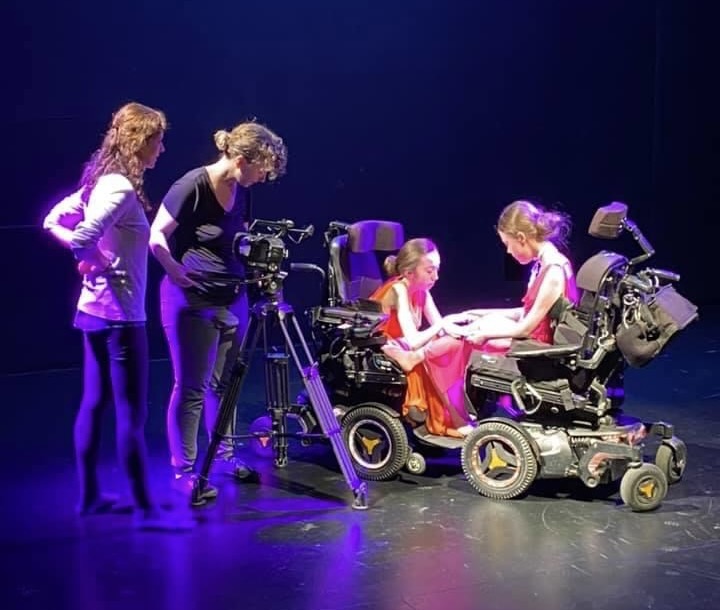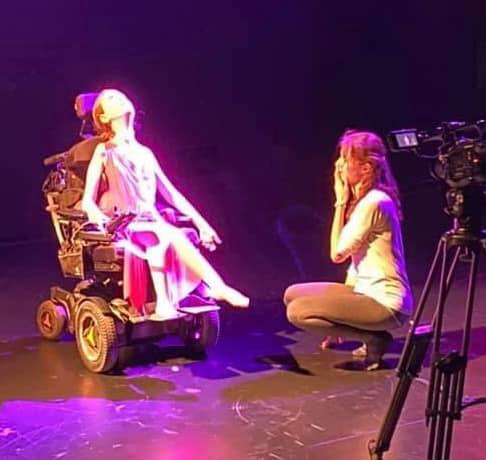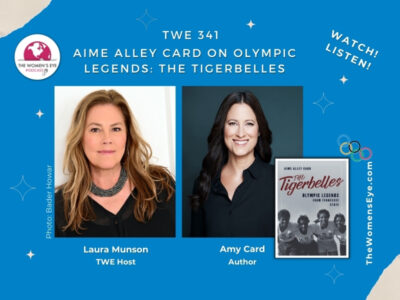
Melissa van Wijk, an accomplished dancer, choreographer and teacher, is an important changemaker for many who might otherwise be marginalized….persons with physical and mental disabilities who want to dance.
“I had never been in a dance class with a person who uses a wheelchair or who happens to be deaf. I got to thinking about why that is, and the rest is history. If you have a body, you can dance.“
Melissa van Wijk, Founder of New York-based Born Dancing
Melissa started her unique nonprofit Born Dancing in 2015. It’s a place for the young as well as the aging, athletic, underserved and the challenged to dance. Students learn routines for a performance and all dance together.
I was intrigued with finding out more about how Melissa uses her passionate vision for dance to enhance the lives of the abled and challenged alike…
EYE: What led you to work with physically challenged and other underserved students?
MELISSA VAN WIJK: I was stuck on a stalled NYC subway and a thought randomly occurred to me that I had not experienced a dance class before where there was person with a disability participating. I had never been in a dance class with a person who uses a wheelchair or who happens to be deaf.

I got to thinking about why that is, and the rest is history. I thought this was something that I, we all, could do better in.
EYE: I saw the incredibly moving Dance Chain video on YouTube that you created during the pandemic and had to find out more about how it came about. It demonstrated how much energy you put into your work and how talented the dancers are.
MELISSA: We weren’t able to teach, rehearse, or create a show at the time. So we made a video. The first dancer created a phrase and videotaped themselves dancing in their home or yard or on their roof top. That video then was sent to the next dancer who started their movement phrase with the last thing the previous dancer had done. And so on and so forth.
EYE: What do you love so much about dance?
MELISSA: You do not need anything other than yourself to dance. Dancing moves past our (spoken) language into a deeper connectedness. As a kid my fascination grew. It was in my late teens that I discovered that choreography is where my heart is.
EYE: What is the significance of the name Born Dancing?
MELISSA: The notion that everyone is born dancing. It’s innate in all of us as human, no matter the kind of body you’re born with or become. We all move and dance.
EYE: What kind of dance do you teach?
MELISSA: We mostly work in Modern Dance. And whatever else floats my boat. I like to incorporate a lot of everyday movement into the choreography.
EYE: Beyond the dance steps what does dance teach students?
MELISSA: That knowing communication and connection are not only verbal or linguistic.

EYE: What are the common challenges you deal with in your program?
MELISSA: Our city, our world is not yet fully integrated. Few theaters and rehearsal space offer full access to performers or production staff who use wheelchairs or other devices to get on or off the stage, get into the dressing rooms, etc.
Plus, with such a variety of artists, ages, and abilities we tend to work slower and juggle more logistics. We have American Sign Language interpreters. Some kids use communication boards or iPads.
We have to audio describe for dancers, students, and patrons who are blind or have low vision etc. Patience and a sense of humor are a must!
EYE: How would you describe students lives grow with your dance opportunity?
MELISSA: I see the discovery that they could do something that they themselves or those around them didn’t think they could do. They not only can participate, they can deliver and contribute at a professional and artistic level.
EYE: Do you have any feedback from your challenged students?
MELISSA: There was Ava, age 14 at the time, who has Down Syndrome who said,
“I feel like this is my home; I love Born Dancing! Because of you, I am a professional dancer now.”
And there is Greta, currently age 14, who uses a wheelchair due to congenital muscular dystrophy who said,
“Dance is really just a way for me to express myself and be a part of a community that I know supports and understand me.”

EYE: Since you are the choreographer of the performances, what challenges do you face?
MELISSA: My biggest challenge is that all the administrative, legal, and financial management takes up so much of my time that there is not enough time for me to tend to the artistic and education work. When there’s a grant application deadline, or rehearsals have to get rescheduled due to a last-minute emergency, I have to tend to it, right then and there.
That can mean I spend less time preparing choreography. I continue to struggle with that at this stage. I am often not able to spend my time on what is most salient to our mission.
EYE: What has surprised you, personally, in your journey with Born Dancing?
MELISSA: How much fun it is. And how profoundly wonderful and magical the dancers and artists are who want to do this type of work.

EYE: What range of disabilities do you work with?
MELISSA: Any and all. If you have a body, you can come dance with us. So far, students and dancers have been age 7 to 76. These have included people who are deaf, blind/low vision, with paralysis, muscular dystrophy, hydrocephalus, intellectual or cognitive disabilities, autism spectrum disorder, people with limb loss, dwarfism, brain injury, Parkinson’s disease. When we say all ages and abilities, we really mean it.
EYE: Why is it important to be inclusive by integrating the challenged students with those who are not challenged in performances and routines?
MELISSA: I think it is important for students with disabilities to see adults with disabilities working collaboratively and successfully alongside non-disabled people. Then, they can imagine what their future work or recreational lives may look like, and erase any doubt that they perhaps would not be able to be a part of aspects of our society or their community.
The adults in our company who have a disability themselves are mindful of their roles as models for the students. I think we are all mindful of that. We wish the world to become more integrated, and in our Born Dancing bubble we can create that for ourselves and plant seeds with our students who will take and grow that into their own lives and futures.
EYE: How long are your sessions/commitments by students and what is the goal of a year-end performance?
MELISSA: It varies greatly. We partner with public schools and organizations that serve minors with disabilities. Each program is developed and scheduled based on the students, time frames, performance etc. It is different every time.
EYE: You include other avenues besides performance for students to consider like design and production. Have any gone on to professional jobs in those arenas?
MELISSA: Not yet. COVID obviously paused our work for some time. Re-establishing our apprenticeship program is a challenge and we want to grow that into a summer internship program.

EYE: What advice do you have for anyone who wants to start a project they are passionate about?
MELISSA: Yikes, it’s hard to give advice. I’d say be prepared for it to be really, really, really hard. And when it gets really hard, you’re likely to be the one who wants to give up, and yet you have to be the person who has to convince yourself to keep going. I wasn’t prepared for that. I wanted to give up every day for the first two years.
EYE: When you take a step back and look at the successful performances, production classes etc., what do you think/feel?
MELISSA: Grateful. I am sooooo lucky I get to do this.
EYE: What do you still want to achieve?
MELISSA: A substantial internship program for adolescents with disabilities who are close to graduating or have recently graduated, so they can learn any of the myriad of jobs and crafts in the dance and theater field.
In collaboration with other dance companies, theaters, box offices, Broadway shows, independent film production companies etc. we hope to become a place where students can find the right internship for them and where others in our field come to offer meaningful learning experiences for these adolescents.
EYE: Melissa, this is just such a remarkable opportunity for all involved. All of us at TWE wish you nothing but success for your program. Melissa, by the way, also is one of the Program Directors at Gymtime and has an LLC teaching baby sign language on top of being a doctoral student. Thank you for taking precious time out of that busy schedule!

Website: https://www.borndancing.org/
Facebook: Born Dancing, Inc
Instagram: borndancinginc



Leave a Reply